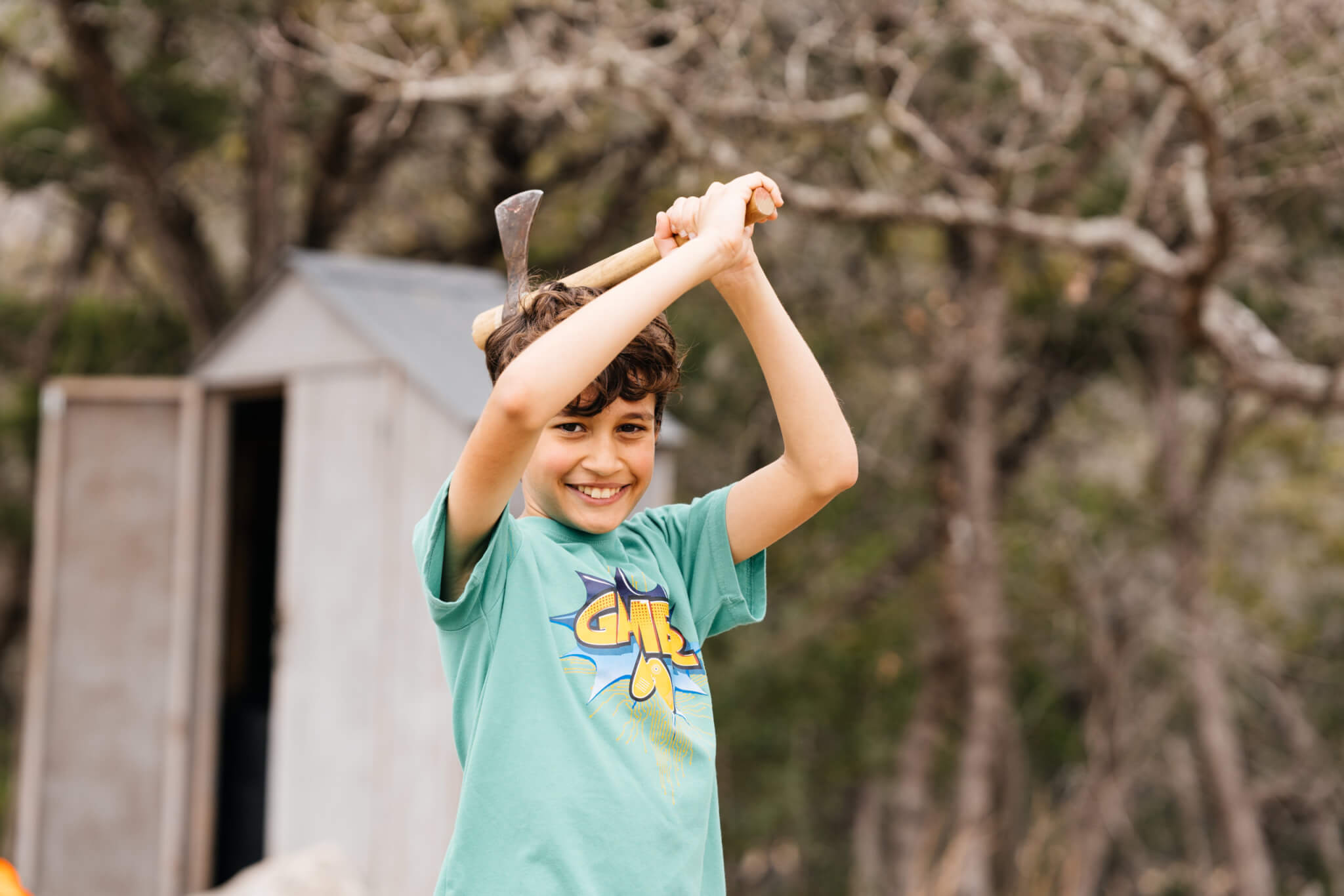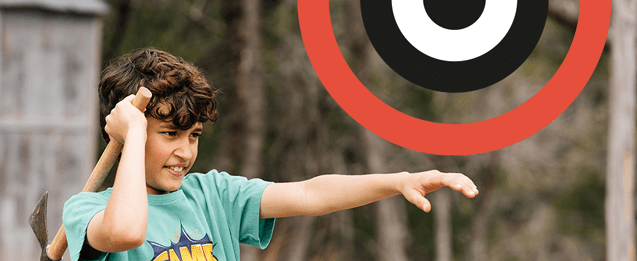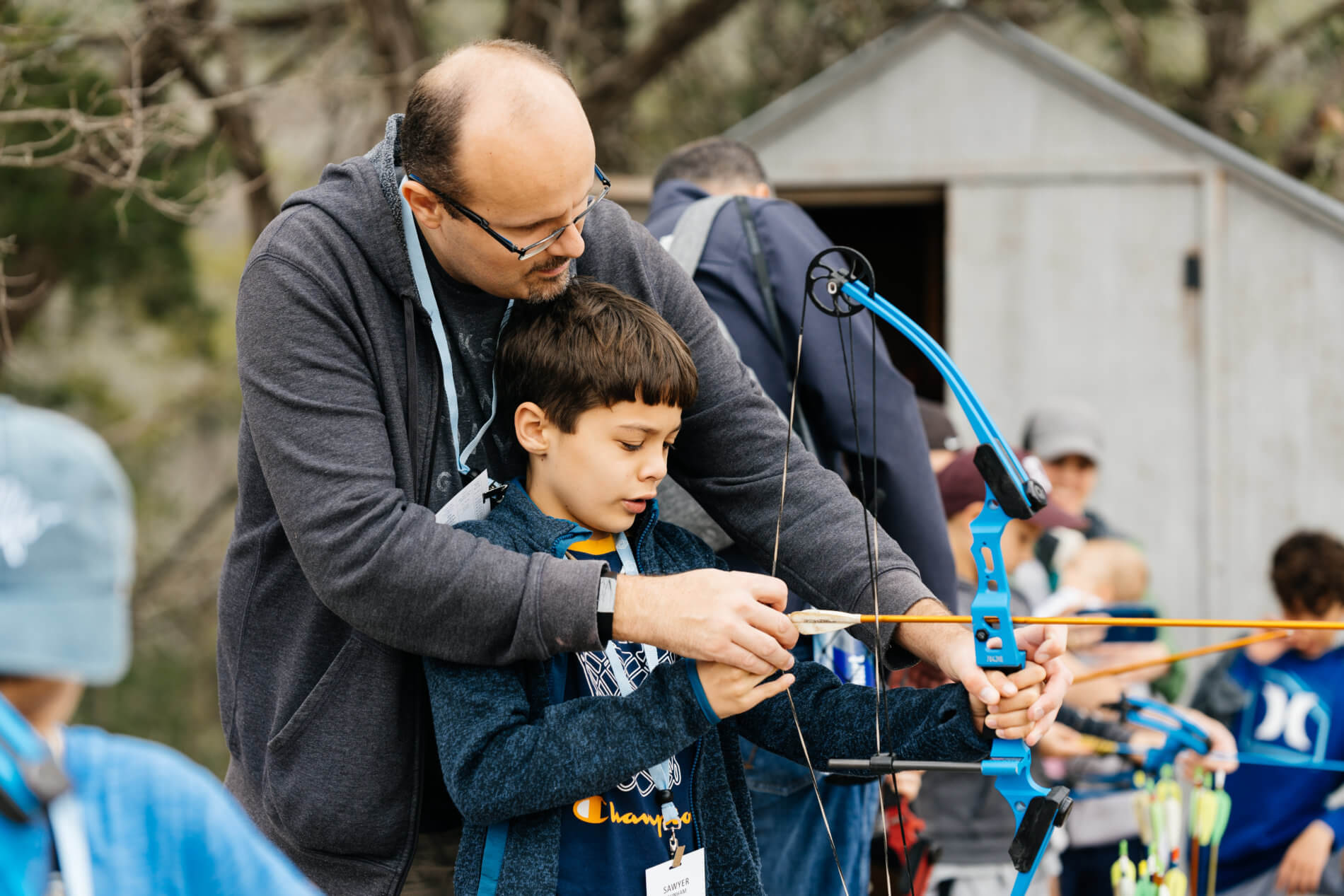

called Kayla Williams, the rangemaster for a Family Camp weekend in March.
A volley of arrows immediately launched…mostly into the dirt.
The kids standing on the platform at the archery range looked discouraged. It wasn’t the Robin Hood and Katniss Everdeen outcome they’d imagined. But Mauro Sericano, father of two of the four kids on the platform, sprang into action. He and his wife Lindsey had volunteered for several years as rangemasters with Outdoor School, and they knew what to expect.
Whether they were excited or hesitant, most kids need a lot of encouragement at the archery range.
“Don’t worry about anybody else,” Sericano would tell the Outdoor School kids. “Give yourself a shot.”

Now, he was passing that encouragement to his kids during their first Laity Lodge Family Camp experience. He crouched next to his youngest son and daughter, showing them how to sight their bow and level their arm as they drew the string. The next volley got better. So did the next.
“What a launch!” someone called out as an arrow sailed over the targets.
“You got this buddy,” a smaller boy said to his big brother.
Target sports like archery, tomahawk throwing, and pellet guns are staples of the camp experience for Laity Lodge Youth Camps and Family Camps. Outdoor School, which works on a compressed schedule, sometimes includes a trip to the archery range as well.
IN A WORLD AFRAID OF FAILURE, TARGET SPORTS TURNS EVERY “FAILURE” INTO A CHANCE AT CALIBRATION.
Most kids never sink a solid bullseye, but the pursuit itself is gratifying.
The misses are as important as the hits, said Myles Amador, assistant director of the adventure recreation for the H. E. Butt Foundation. When kids only want to do what they are good at, they might lose the joy of doing things “just for fun.” They might also shy away from the vulnerable, laborious work of mastery.
“I felt this as a kid too,” Amador said. “Ultimately we’re told that the best kids in your class are the people who can minimize their failures as much as possible and promote their achievement.”
The adventure recreation team puts a lot of thought into the safety protocols for target sports, continuously improving the training and staying up on best practices from safety certification groups. While the camp uses appropriate youth sporting equipment, not what a hunter would use to fell a deer, much less weapons of war, the potential for injury is real. For target sports to be fun, safe, inspiring activities, staff have safety certifications, and everyone on the range is expected to listen to the rangemaster at all times.
That sobriety, Amador said, is why they’ve never had to enact their finely tuned crisis plan for target sports injuries. There’s plenty of time for goofing off and acting silly at camp, but the range is not the place.
Everyone waits their turn, waits for rangemaster instructions, and learns to meticulously load, position, and aim their pellets, arrows, and axes. Eager, bouncy kids—the recommended age for target sports is 7 and up or with parents—have to follow the same safety protocols as adults. It’s a chance to practice self-control and awareness of their surroundings. Target sports require focus.
Drayton Bodner, 6, was ready to focus when he lined up with the Sericano kids on the platform at Family Camp. Most of his first shots ended up in the dirt, and his dad had to help him draw the bow. But Bodner wasn’t deterred, he loves archery, and he knows it’s all about practice.
